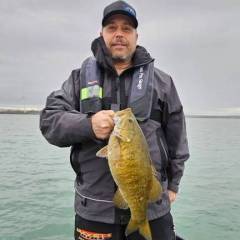Leaderboard
Popular Content
Showing content with the highest reputation on 06/16/15 in all areas
-
5 points
-
Same song, different day... Subject:Bowhunters Opposes A8021 and S5807 Required text: (This text will be included in your message) I am a bowhunter and am urging you NOT to support A8021 and S5807 (Gunther/Gallivan). The purpose of the above bill is to have the crossbow reclassified as a conventional bow. I have serious safety concerns as explained below.The modern crossbow much more closely resembles and functions as a firearm than those bows which are allowed in archery season (longbow, recurve and compound bow). Although a crossbow uses a string and a hunting tipped shaft, the similarity ends there. The crossbow has a stock, trigger and most are equipped with a telescopic sight. Whereas a conventional bow must be hand drawn with each arrow and hand held, crossbows are pre cocked (pre loaded) and may be rested on support when fired. Whereas the average range at which a deer is taken with a conventional bow has remained at under twenty yards for decades, the long range capabilities of the crossbow are widely promoted by their manufacturers. In 2014, when allowing the crossbow to be used during the last two weeks of archery season in the southern zone (and last 10 days in the NZ), the NYSDEC recognized the superiority of the crossbow and thereby decided it would be best to require that users purchase a Muzzle loader permit. This assures its users have attended a firearm safety class. Another acknowledgement by the DEC that the crossbow has superior capabilities was the attachment of a 250 foot minimum discharge distance from dwellings while the conventional bow is allowed only a 150 foot discharge distance. One of the features of A8021 and S5807 is to eliminate the 200 pound (draw) weight restriction on crossbows. This is between three and four times the (draw) weight of most conventional bows. The extremely high draw poundage of a crossbow are able to be attained because the crossbow uses mechanical means to draw the string while conventional bows do not allow automatic draw devices. The modern crossbow is an ever evolving piece of machinery. They are getting more powerful and faster every year and as such need to have restrictions that will assure the safety of all those that share the woods. The final piece of A8021 and S5807 is to allow the crossbow to be used by 12 and 13 year olds during the Columbus Day weekend youth firearm hunt. Currently 12 and 13 year olds are already permitted to use conventional archery equipment throughout all archery seasons. The Columbus day youth firearm hunt was implemented by the DEC to give 14 and 15 year old firearm hunters an early opportunity to use a firearm. Those same 14 and 15 year olds are already allowed to use the crossbow during the crossbow part of archery season. With the long range capabilities of the crossbow, coupled with their telescopic sights, the mechanical / technical advantages that already exist and advancements being made every year, there are numerous safety concerns that are attached with the use of a crossbow and I urge you to not support A8021 and S5807 I would spend the two minutes to tear down these silly statements, but Id just be repeating myself for the 30th time.3 points
-
Organic, is a joke do you actually know what they consider organic? Look up the regs, unless you grow it yourself I would question all organic products..3 points
-
Some on this site will call you a troll for your pro-science view. I heard the pope called a "closet Marxist". Prepare for noise.3 points
-
The Coming Ice Age 1978. Predicted by - experts. And - Leonard Nimoy.2 points
-
Friday May 3, 2013 7am to 5pm Sat. May 4 , 2013 7am to 11 am Route 187 North Orwell Community Hall N. Orwell, Pennsylvania 18837 From route 17 (86) Exit 62 Nichols Ny 10 mile South on Pa Rt. 187( Building on left side of road) Antique Traps. Trapping Traps, Bear Traps, knives, hunting licenses, hunting guns, ammo. fishing,sporting items. Dealers come from a dozen states and Canada Tail Gaters selling sporting items only $ 15.00 per spot outside Free Admission Shows goes on Rain or Shine (Note ) Friday is main Day for buying and selling Please come and join us celebrate our 20 th year for this Show Bring in your unwanted Traps and sell them to one our dealers Show Contact: Bruce McCormick (after 5m weekdays) 1-607-426-6276 2nd Contact : Bill Kasten 1-570-278-25531 point
-
http://www.13wham.com/news/features/top-stories/stories/oldest-bald-eagle-found-henrietta-23713.shtml?wap=01 point
-
1 point
-
Source: http://www.dec.ny.gov/energy/100236.html Climate Change Adaptation in New York A big gap in the road by the shore of a waterbody that was washed out Higher sea levels intensify storm surges. Superstorm Sandy's ferocious surge damaged this road in Mount Loretto unique area, Staten Island. New York's climate is becoming wetter and warmer. Scientists project greater weather variability, with intense storms becoming more frequent and floods more damaging. Precipitation is likely to increase somewhat, but between wet periods we may endure several weeks when no rain falls. How much our climate actually changes will depend in part on how successfully, and how soon, nations are able to reduce greenhouse gas emissions. But some climate change is already unavoidable. New York is working to estimate likely risks and help communities and businesses adapt to a changing climate. Sea-level rise projection meetings June 23-25 To strengthen New York's preparedness for climate change, Governor Andrew M. Cuomo recently signed into law the Community Risk and Resiliency Act (CRRA). CRRA requires DEC and other state agencies to adopt by January 1, 2016 official State sea-level rise projections that willl serve as the basis for State adaptation decisions and will be available for use by all decision makers. Before DEC proposes a draft regulation adopting sea-level rise projections, four meetings, including a webinar, will provide an opportunity for public input. Later in 2015, a draft rule will be made available for formal public comment. At the meetings, DEC staff will introduce CRRA and present scientific information being considered relative to the regulation establishing sea-level rise projections. Participants will have opportunity to provide additional input for consideration. Public meeting dates and locations are as follows: Tuesday, June 23 - 1:00 p.m. at Wertheim National Wildlife Refuge Visitor Center, 340 Smith Road, Shirley, Suffolk County Tuesday, June 23 - 7:00 p.m. at Operation Splash, 202 Woodcleft Ave., Freeport, Nassau County Wednesday, June 24 - 10:00 a.m. at Hunter College, West Building, Room 511, 67th St. and Lexington Ave., New York City, New York County Thursday, June 25 - 2:30 p.m. at DEC headquarters, Room 129, 625 Broadway, Albany, Albany County Individuals planning to attend the June 25 meeting in Albany are asked to pre-register with the Office of Climate Change at [email protected] or by phone at 518-402-8448. Failure to pre-register may result in delayed entry to the meeting. Those attending must present photographic identification. For additional information on CRRA and the sea-level rise projection regulation, contact the Office of Climate Change. The June 25 meeting will be accessible via WebEx webinar service Meeting Number: 642 587 387 Meeting Password: tides1 To join the webinar Go to https://meetny.webex.com/meetny/j.php?MTID=md76e33d4a7d61457259b1bfe099c73d9 If requested, enter your name and email address. Enter the meeting password: tides1 Click "Join." To view in other time zones or languages, click the link: https://meetny.webex.com/meetny/j.php?MTID=m2c3946e751a0f3d69c03b16aabc45929 To join the audio conference only Provide your number when you join the meeting to receive a call back. Alternatively, you can call one of the following numbers: Local: 1-518-549-0500 Toll Free: 1-844-633-8697 Alternate Toll Free (For callers not able to call the 844 Toll Free Number): 1-866-776-3553 Follow the instructions that you hear on the phone. Extreme events threaten resources and people Extreme weather and floods make headlines -- they kill and injure, disrupt entire regions, contaminate water and promote insect borne diseases. Cleanup and restoration consume scarce public- and private-sector resources, often for months or years. For New York's coastal and estuarine areas, the greatest climate risk is flooding from the combination of more frequent severe storms and rising seas. With more than half of the state's population, and infrastructure worth many billions of dollars, our coastal areas are vulnerable to widespread suffering and loss from floods. For upland areas of the state, projections show more frequent heavy precipitation events. Torrential rains and heavy snow or ice create risks to life, health and infrastructure. Such storms can disrupt not only travel, electric power and communication, but also agriculture, tourism and other vital economic sectors. Everyday climate risks also raise vulnerability Snowy scene of trees weighted down with snow next to power cables also covered in snow Heavy ice events disrupt electric power, communications and transportation. Not only extreme events, but also any change from the predictable and moderate conditions of the past can interfere with accustomed activities and create new risks. The changes discussed below have been observed in New York and are projected to continue. Rising sea levels: Mid-range projections (25 to 75 percent likelihood) of sea-level rise along New York's coast are 18 to 50 inches in this century. Such high levels would greatly intensify the danger and damage from storm-related flooding. Warmer temperatures: Long, intense heat waves raise health risks for human and animal populations. Warm winters and hot summers will likely lower the productivity of temperature-sensitive agricultural products like maple syrup, apples and dairy. Warmer weather also favors disease carriers and pests. New precipitation patterns: Heavy precipitation is expected to fall more frequently, and there may be a trend toward longer-lasting events that compound the damage. Similarly, persistent shortages of precipitation can be expected more often. Such shortages can lower field crop yields and reduce the amount of water available for drinking, irrigation and hydropower. Weather variability: Unusual weather not only inconveniences people, but also disrupts natural cycles. For instance, warm spells in late winter can make plants bud and bloom early. Young leaves and flowers are vulnerable to severe damage if temperatures later swing back below freezing; early blooms may be gone before the arrival of birds or insects that pollinate and feed on them. Setting up for resilience Climate change impacts already are testing New Yorkers' ability to survive problems and come back better. These impacts are likely to intensify, increasing the value of resilience measures adopted now. As climate change progresses, more New Yorkers are likely to confront physical disasters like Hurricane Irene and Superstorm Sandy. What is more, most of us will encounter impacts that are less dramatic but still costly or disturbing - more dying trees, lower crop or garden yields, our favorite catch missing from the creel. Recent experiences, accumulating data and current projections are revealing how climate risks threaten different areas of New York. Knowledge of these risks enables businesses, governments and individuals to plan for resilience. Community Risk and Resiliency Act (CRRA) Stream and collapsed bridge This bridge over Stony Clove Creek in Ulster County is an example of the extensive damage to inland New York's infrastructure by ten days of record rainfall from Hurricane Irene (2011). CRRA includes two key provisions to advance New York's climate change adaptation: First, applicants to certain State programs must demonstrate that they have taken into account future physical climate risks caused by storm surges, sea-level rise or flooding. Second, DEC must establish in regulation State-adopted sea level rise projections, which will be used as the basis for State adaptation decisions and will be available for use by all decision makers. CRRA applies to specific State permitting, funding and regulatory decisions, including smart growth assessments; funding for wastewater treatment plants; siting of hazardous waste facilities; design and construction of petroleum and chemical bulk storage facilities; oil and gas drilling, and State acquisition of open space. Sea-level rise projections New York State has sponsored a statewide study of the impacts of climate change on our population and resources. Titled ClimAID, the study was completed in 2011; a 2014 supplement updated its sea-level rise projections and incorporated data from recent severe storms and updated climate modeling. Cows outside barn behind electric wire fence with heads poking through Dairy cows produce less milk in very hot weather, so as temperatures warm New York will see impacts on one of its prime agricultural sectors. An additional sea-level rise study, limited to Nassau and Suffolk counties, has been released by the New York State Resiliency Institute for Storms and Emergencies (RISE). The reports and supplement are available through the ClimAID and RISE links at right. Post-Disaster Recovery: Next Generation The American Planning Association's Hazards Planning Center worked under an agreement with FEMA to develop Planning for Post-Disaster Recovery: Next Generation. This updated manual offers an explanation of the benefits and limitations of planning for unpredictable events (see link at right). Protecting families and communities People sometimes raise concerns about the cost to mitigate greenhouse gas emissions and increase climate resilience. The preliminary analysis of ClimAID 2011 shows that failure to reduce emissions and adapt to climate change in a timely fashion may prove more costly than the supposed "savings" from delaying a response. The high cost of doing nothing It is important to compare outlays for adaptation measures with the costs of doing nothing, and to take into account the importance of climate change losses to society. ClimAID 2011 (link at right) initiated these comparisons with a statewide analysis of limited data on eight economic sectors. This study concluded that unless resilience measures are put in place, by mid-century the total costs of climate change for key economic sectors in New York State each year may approach $10 billion (in 2010 dollars). The study projected the largest likely direct impacts and costs of climate change in coastal areas, chiefly impacting transportation, energy and other infrastructure, and natural resources. However, it concluded, all economic sectors and all parts of the state will feel impacts like lower agricultural crop yields and dairy production, or declining winter recreation tourism. Aerial view of flooded buildings and parking lot Extensive power outages or flood damage to roads can disrupt a wide area for many weeks. For one or more elements in each sector analyzed, the projections show the following mid-century (2050s) annual costs of climate change impacts: water resources, $116-203 million; ocean coastal zones, $44-77 million; ecosystems, $375-525 million; agriculture, $140-289 million; energy, $36-73 million; transportation, $100-170 million; communications, $15-30 million; and public health, $2,998-6,098 million. These figures probably understate the aggregate expected costs, especially for heavily developed coastal areas. Improving resilience: cost-effective common sense As the global average temperature rises, New Yorkers already are seeing more extreme precipitation, heat and storms. Making our properties and communities more resilient in the face of these changes is common sense and good business. Before DEC drafts a proposed regulation, four meetings, including a webinar, will provide an opportunity for public input. Later in 2015, the draft rule will be made available for formal comment.1 point
-
Chicago has one of the strictest gun control laws in the nation and has one of the highest homicide rates . Why didn't Blooming Idiot use data from Chicago ...... hmmmmmm . When I was taking college courses , a required reading was "How to Lie With Statistics" . You could prove what you want by using the sample that suited your needs .1 point
-
Maybe we should all go to protest the proposed changes.1 point
-
I've no doubt that this "old bird" would never have gotten a start in life were it not for the 1972 ban of DDT.1 point
-
Just thought some people would want to attend these DEC meetings, that's all. Here is the germane part: At the meetings, DEC staff will introduce CRRA and present scientific information being considered relative to the regulation establishing sea-level rise projections. Participants will have opportunity to provide additional input for consideration. Public meeting dates and locations are as follows: Tuesday, June 23 - 1:00 p.m. at Wertheim National Wildlife Refuge Visitor Center, 340 Smith Road, Shirley, Suffolk County Tuesday, June 23 - 7:00 p.m. at Operation Splash, 202 Woodcleft Ave., Freeport, Nassau County Wednesday, June 24 - 10:00 a.m. at Hunter College, West Building, Room 511, 67th St. and Lexington Ave., New York City, New York County Thursday, June 25 - 2:30 p.m. at DEC headquarters, Room 129, 625 Broadway, Albany, Albany County Individuals planning to attend the June 25 meeting in Albany are asked to pre-register with the Office of Climate Change at [email protected] or by phone at 518-402-8448. Failure to pre-register may result in delayed entry to the meeting. Those attending must present photographic identification. For additional information on CRRA and the sea-level rise projection regulation, contact the Office of Climate Change. The June 25 meeting will be accessible via WebEx webinar service Meeting Number: 642 587 387 Meeting Password: tides1 To join the webinar Go to https://meetny.webex...59b1bfe099c73d9 If requested, enter your name and email address. Enter the meeting password: tides1 Click "Join." To view in other time zones or languages, click the link: https://meetny.webex...c03b16aabc45929 To join the audio conference only Provide your number when you join the meeting to receive a call back. Alternatively, you can call one of the following numbers: Local: 1-518-549-0500 Toll Free: 1-844-633-8697 Alternate Toll Free (For callers not able to call the 844 Toll Free Number): 1-866-776-3553 Follow the instructions that you hear on the phone.1 point
-
I really wouldn't care about the propaganda, if it wasn't such a threat to the average American's wallet! Until the entire world agrees climate change is scientifically proven to be caused by human beings, and ALL the world's countries decide to cooperate in making affordable changes, I do not think we should be the only one's sacrificing our economy until we also become a third world country.1 point
-
1 point
-
1 point
-
I remember when the "science" said NYC would be under water by now too.1 point
-
1 point
-
Saw that in Sunday's Buffalo Snooze. Interesting to say the least. Cool old bird I bet, probably had lots of stories to tell........1 point
-
yeah, I don't think I've ever heard of someone losing an animal due to penetrating it too deeply.........1 point
-
Protests and rallies only work if your gay or black. When more than 20 straight white folks get together to scream and shout it's called a family reunion.., wedding.., or funeral,lol1 point
-
Folks, As HNY.com gets on with age so does the people that keep it alive. Now I'm sure there are some out there that do this already. Being on a forum and being able to reach people is an easy way to help them. In the future I can see a forum called take a senior hunting. Those in need of help to get into the woods to hunt. Take a kid hunting is just as important as taking those who have blazed the trail for us. I miss taking my Father in law into the woods. As time goes on and we get older there will be a need, keep it in mind. I think Doc may be ready in a few years, only kidding, he is as healthy as a strutting buck!!1 point
-
Protesting doesnt do as much as getting involved with an organization that has some political pull, and matches up with your beliefs and values. Emailing, sending letters and making phone calls to your representatives are also part of how you help to make a change. I dont know about you, but i have much more going on in my life other than the discussions i have on this site.1 point
-
I will be 74 this upcoming deer season . I find it a bit difficult taking a senior hunting . I can't push their wheelchairs out into the woods .1 point
-
Most sittings I don't see a deer. Unless I position myself where I'm overlooking the neighboring hills/fields, then I'll usually see a deer or two come into a field somewhere in the evening. The days of 5-6 deer together are long gone!1 point
-
....says the biggest troll on the site that blows his stack when people call him out on his conspiracy theories and say anything against his religious beliefs...1 point











